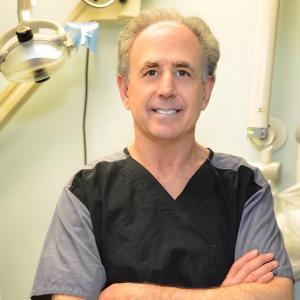New Article Highlights Relationship Between Women and Dental Disease
Female hormone fluctuations make women more vulnerable to periodontal disease
It is crucial for dental professionals to consider the uniqueness of oral diseases in women”
SCARSDALE, NY, UNITED STATES, September 16, 2025 /EINPresswire.com/ -- Fluctuations in female hormones throughout a woman’s lifecycle make women uniquely susceptible to certain types of dental diseases of the teeth and gums. A newly released paper authored by a team of dentists and physicians, Oral Biofilm and Gender-Specific Health Considerations, in the journal Cureus, summarizes the growing body of research on the sex-related differences in oral biofilm and the health impacts in women, as well as in men, and transgender men and women.— Dr. Robert A. Horowitz
Oral biofilm, commonly called dental plaque, is comprised of various bacteria encased in a protective structure that allows the bacteria to stick to teeth and cause damage and decay. Oral biofilm not only damages teeth and gums but it also can stimulate systemic inflammation and contribute to chronic conditions such as heart disease, diabetes, osteoporosis, and other illnesses.
“The impact of oral biofilm on women is striking,” explains Dr. Robert Horowitz, a periodontist based in Scarsdale, New York, and co-author of the paper. “Women undergo fluctuations in levels of the hormones estrogen and progesterone at key milestones throughout their lifecycle – puberty and menstruation, oral contraceptive use, pregnancy, menopause – and these fluctuations change the composition and harmful actions of the oral biofilm. At various times in their life, women can become more susceptible to inflammation and gum disease because of hormonal changes. The body’s exaggerated inflammatory response to even very small amounts of oral biofilm can trigger excess gum swelling and bleeding.” Horowitz adds that increased gum swelling and bleeding can be associated with the menstrual cycle even if biofilm has not accumulated.
Hormonal fluctuations with pregnancy raise the levels of estrogen and progesterone in a woman’s body and can heighten the body’s immune and circulation responses to the presence of biofilm. Horowitz notes that “it is quite common for us to see gum redness, swelling, and bleeding in women who are pregnant. We also see some of the same gum changes in women on oral contraceptives.”
The natural presence of estrogen throughout a woman’s life helps protect the tissues of the mouth, the blood vessels around the teeth, and bone metabolism. Menopausal women can experience reduced saliva flow, changes in the composition of their oral bacteria, and thinning of tissues in the mouth. Additionally, drops in natural estrogen levels during menopause make women more susceptible to build-up of oral biofilm, gum inflammation, and bone loss around the teeth.
“One of the most serious consequences is loss of bone in the jaw, which is similar to osteoporosis in other bones,” says Horowitz. “The combination of bone loss and inflammation from oral biofilm increases the risk of tooth loss in women during and after menopause.”
“It is crucial for dental professionals to consider the uniqueness of oral diseases in women and how care needs to be tailored to their specific oral health needs. Understanding the interactions among oral biofilm, inflammation, health, and chronic disease can help dental professionals tailor their approaches to prevention and treatment to the specific needs of women, as well as to transgender women taking female hormones. Of course, it is essential to encourage all individuals to practice good oral hygiene and maintain regularly scheduled professional cleanings and examinations to identify and manage biofilm accumulation.” Adding to these issues can be increased periodontal problems, clenching and grinding due to sleep apnea and medications taken during Gender Affirming Hormone Therapy.
About Robert A. Horowitz, DDS
Dr. Robert A. Horowitz is a global expert in treating biofilm accumulation and its consequences. He combines clinical, x-ray, and histological observations to evaluate the impact of biofilms on oral tissues and bone and effective methods of treatment and prevention. As a leader in the fields of periodontics and dental implants, Dr. Horowitz tests, lectures on, and publishes research looking at how materials can be used to regenerate bone and save teeth. Dr. Horowitz also researches the use of dental bone grafts at the time of tooth extraction, as well as after bone loss, to increase bone volume and improve the success rates and aesthetics of dental implants.
Robert A. Horowitz, DDS
+1 914-723-3366
email us here
Robert A. Horowitz, DDS
Legal Disclaimer:
EIN Presswire provides this news content "as is" without warranty of any kind. We do not accept any responsibility or liability for the accuracy, content, images, videos, licenses, completeness, legality, or reliability of the information contained in this article. If you have any complaints or copyright issues related to this article, kindly contact the author above.

